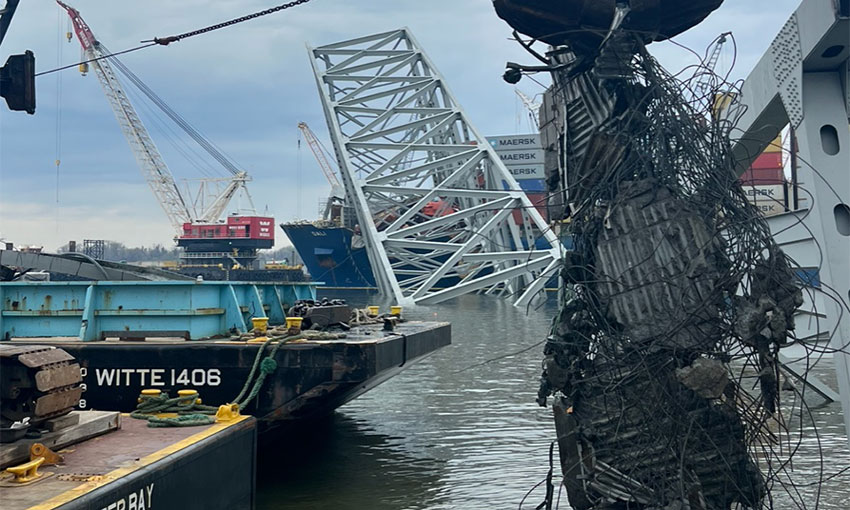FIVE of six large commercial vessels trapped in port by the Baltimore bridge collapse have been able to escape after the US Army Corp of Engineers cleared enough wreckage to open a 35-foot deep channel.
The freed ships include the Wallenius Wilhelmsen PCTC Carmen, which has resumed it voyage to New Zealand and Australia and is expected here at the end of June. Only the deeply-laden Klara Oldendorff is unable to transit the so-called Limited Access Channel.
The LAC opened yesterday [25 April] for a limited window 29 or 30 April, depending on weather. After then the channel will not be available again until approximately 10 May, to allow the start of “critical and highly dynamic salvage operations” as part of the effort to fully clear the channel.
The channel has a controlling depth of 35 feet, horizontal clearance of 300 feet, and vertical clearance of 214 feet. According to a Captain of the Port bulletin vessels using the channel need a Maryland State pilot and two escort tugs, ahead and astern on centreline, with a 3 foot under keel clearance requirement. Transits are limited to winds less than 15 knots.
USACE recently reported the arrival by barge from Galveston of a 200-tonne hydraulic claw, capable of lifting 1000 tonnes, to expedite removal of bridge debris.
The full reopening of the 50-foot-deep Fort McHenry Federal Channel is still not expected until the end of May.
The Francis Scott Key Bridge over the Potapsco River collapsed on 26 March after being struck by the powerless 9962 TEU containership Dali, which remains ‘bogged’ by the bow in mud with a section of bridge draped over it. Passing ships using the LAC will be limited to 5 knots.

